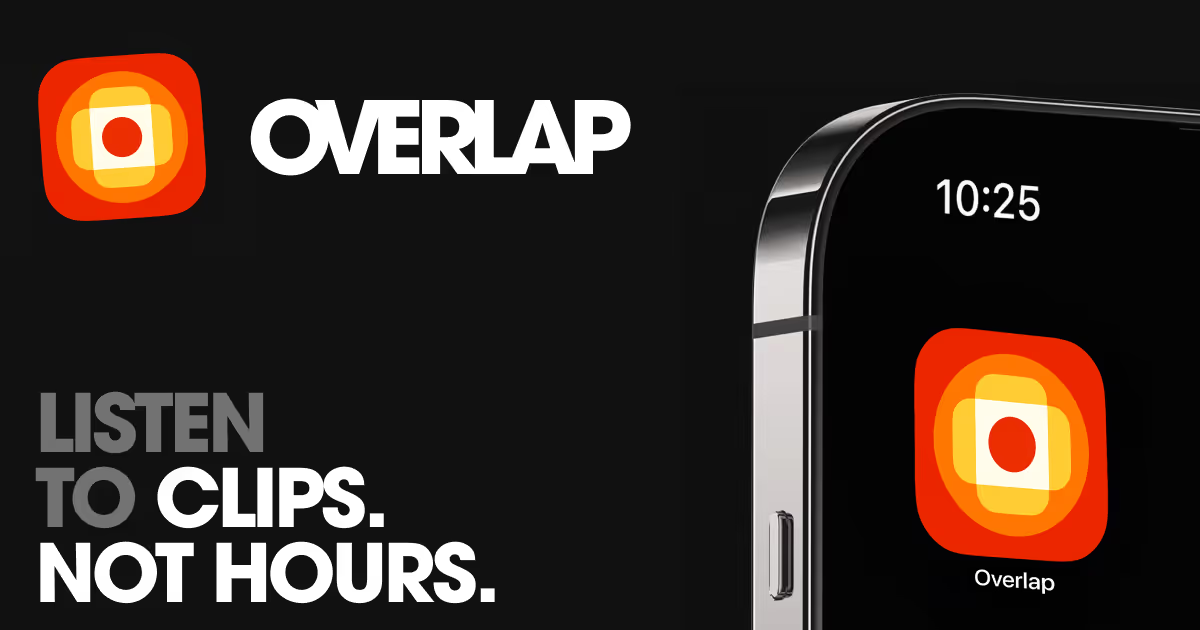
Overlap envisions a future where the burdensome, manual tasks of video editing and content repurposing are completely transformed by intelligent automation. Our mission is to empower creators, media companies, and marketers to unlock the full potential of their long-form video content effortlessly, accelerating creativity and reach through AI-driven innovation.
By harnessing advanced multimodal AI agents, we are shaping a new era of content creation where seconds replace hours and data-driven insights guide every clip generation and social media posting. Our technology redefines productivity, allowing teams to scale impact without increasing overhead, forging new possibilities in digital storytelling and audience engagement at unprecedented speed and scale.
As we expand our AI video workflow platform and integrations, we are committed to building a seamless ecosystem that puts creators and enterprises at the forefront of the content revolution, delivering transformative tools that blend cutting-edge research and practical utility to redefine how stories are told in the digital age.
Our Review
We've been tracking AI-powered video tools for a while now, but Overlap caught our attention for doing something most companies just talk about: actually automating the entire video workflow from start to finish. While others focus on basic clip generation, this San Francisco startup is building multimodal AI agents that can watch your content, understand the context, and handle everything from clipping to posting without human babysitting.
What impressed us right off the bat was their iHeartMedia case study. We're talking about 120 AI agents running simultaneously, processing hundreds of shows, and generating 150 million social impressions in just two months. That's not a demo—that's production-scale automation that actually moves the needle.
The Full-Stack Approach That Actually Works
Most video AI tools we've tested feel like fancy scissors—they'll cut your content, but you're still doing the heavy lifting. Overlap's different because their agents genuinely understand what they're watching. They're not just finding quiet moments to make cuts; they're identifying compelling storylines, maintaining brand voice, and even customizing output for different social platforms.
We particularly like how they've built this across multiple products rather than forcing everyone into one solution. Enterprise teams get their dashboard for managing massive video libraries, creators get Overlap Studio for desktop workflows, and developers get APIs to build custom integrations. It's refreshingly practical.
Why This Timing Makes Sense
The video content explosion isn't slowing down—if anything, it's accelerating. Media companies are drowning in footage while trying to feed the social media beast with fresh clips daily. Overlap's solution hits at exactly the right moment when manual video editing has become genuinely unsustainable at scale.
Their Y Combinator pedigree and $9 million seed round suggest investors see the same opportunity we do. More importantly, they're already proving ROI with real customers rather than just promising future capabilities.
Where We See This Going
What excites us most about Overlap is their focus on agents rather than just tools. As AI gets more sophisticated, we expect these agents to become even better at understanding nuance, brand guidelines, and audience preferences. The company's emphasis on customization and team collaboration suggests they're building for the long game, not just the current hype cycle.
For media companies, podcasters, and marketing teams drowning in video content, Overlap represents a genuine productivity breakthrough. It's not perfect yet—no AI tool is—but it's solving real problems for real customers at real scale. That's exactly what we want to see in this space.
Full automation of video clipping and posting workflows
Multimodal AI agents understanding video, audio, and text
Customizable agents for brand-specific voice and style
Integration with social media platforms and cloud storage
Collaboration with role-based access controls
Security with open-source AI options and encryption








